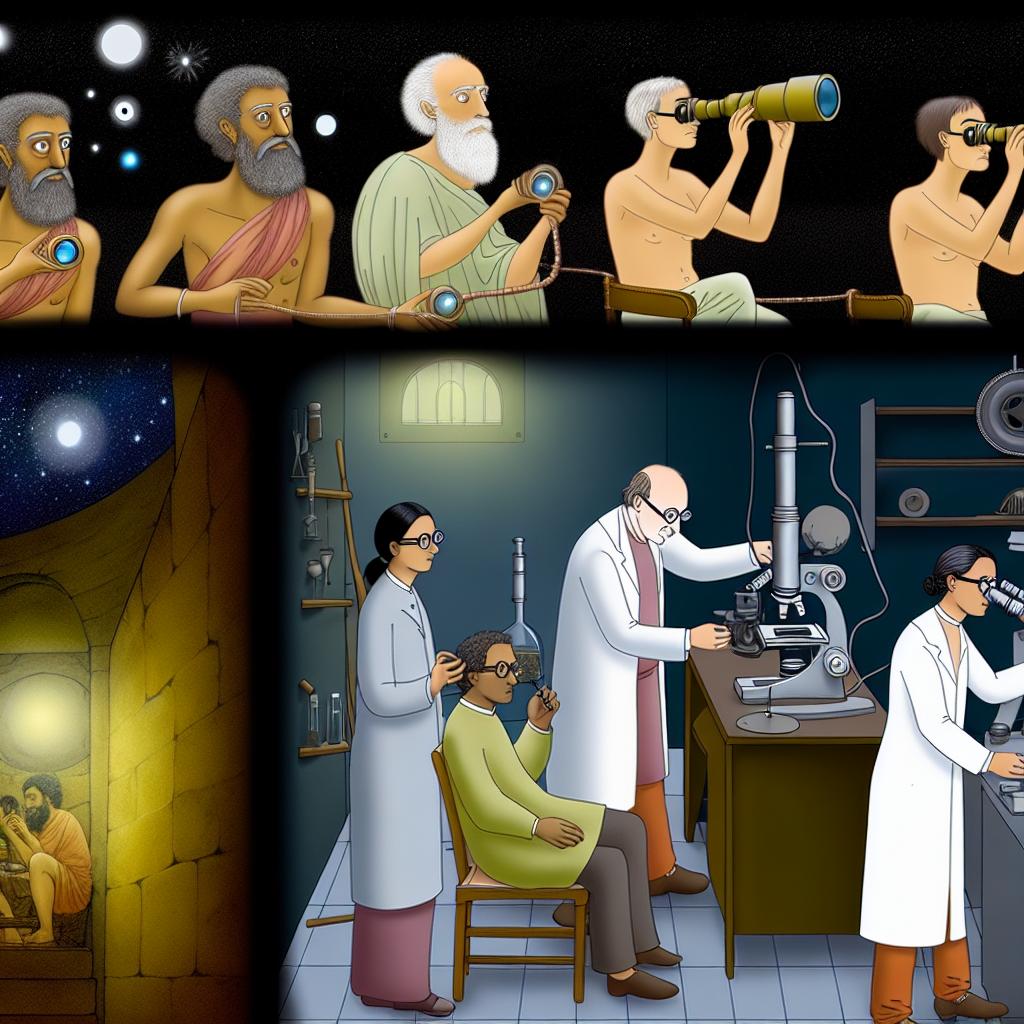Early Beginnings of Optics
The study of optics is deeply embedded in the history of ancient civilizations, where early philosophers and scientists sought to understand the mysteries of light and vision. One of the foundational figures in this exploration was Euclid, an ancient Greek mathematician. Around 300 BCE, Euclid penned his work Optics, which presented geometric theories of vision that would influence future generations. Euclid proposed that vision was a direct result of straight lines, or rays, extending from the eyes to the objects around them. While this concept was later proven incorrect—since we now know that vision is due to light entering the eyes—it was instrumental in starting a long tradition of optical inquiry.
The Influence of Ancient Cultures
Several ancient cultures contributed to the burgeoning field of optics. Among them, the Egyptians and Greeks made remarkable strides. Claudius Ptolemy, an astronomer and mathematician, was particularly notable for his work on the refraction and reflection of light. Ptolemy’s Optics became a seminal text for later scholars, significantly impacting Islamic scientists who would carry on the tradition of studying light. These ancient thinkers slowly uncovered the properties of light, laying the groundwork for systematic scientific investigations in later centuries.
Islamic Contributions
The Islamic Golden Age, spanning from the 8th to the 14th century, was a period of significant advancement in various scientific domains, including optics. A crucial figure during this era was Alhazen, also known as Ibn al-Haytham. In the 11th century, Alhazen wrote the influential Book of Optics. He challenged the prevailing emission theory of vision, which suggested that rays emanate from the eyes. Instead, he introduced a revolutionary idea: vision occurs when light enters the eyes. Alhazen’s approach was empirical, placing emphasis on systematic experimentation and observation. This shift towards an evidence-based understanding marked a significant step towards modern scientific methods. His work remains a cornerstone in optical science, and his Book of Optics continues to be recognized as a significant milestone.
Renaissance Revitalization
The Renaissance in Europe was a period of rejuvenation for scientific exploration, optics included. One of the hallmark inventions of this era was the telescope, attributed to Hans Lippershey in the 17th century. This invention not only transformed astronomical studies but also enabled figures like Galileo Galilei to make groundbreaking observations of celestial bodies, thus reinforcing the heliocentric model of the solar system. Similarly, the invention of the microscope by Antonie van Leeuwenhoek opened new avenues in biology, unveiling microorganisms previously unseen by the human eye. These devices fundamentally changed the way humanity perceived the universe and our place within it.
Newton’s Revolution
Isaac Newton emerged in the late 17th century as a transformative figure in the field of optics. Through his experiments, he discovered that white light is not a singular entity but rather composed of a spectrum of colors. This discovery fundamentally challenged the established belief that colors were merely modified forms of white light. Newton documented these findings in his work Opticks, providing a comprehensive understanding of light’s properties and laying the foundation for modern optical science.
The Wave Theory of Light
Moving into the 19th century, the wave theory of light gained prominence, offering new insights into the nature of light. Thomas Young’s double-slit experiment illustrated the interference patterns characteristic of waves, suggesting that light behaves in a wave-like manner. Augustin-Jean Fresnel expanded upon these ideas by elucidating diffraction—a phenomenon that further supported the wave theory. Eventually, this understanding was integrated into James Clerk Maxwell’s electromagnetic theory, which unified light with electromagnetic waves, reinforcing the wave nature of light.
Modern Optics and Quantum Theory
The 20th century ushered in a quantum revolution, dramatically reshaping optical science. Albert Einstein’s work on the photoelectric effect provided evidence for the particle nature of light, introducing the duality of wave-particle behavior. This groundbreaking concept paved the way for the field of quantum optics, which delves into the intricate behaviors of light at the atomic and subatomic levels. Quantum optics has refined our understanding of light’s properties and behaviors, leading to profound scientific advancements.
Technological Applications and Future Directions
In contemporary times, optics has become an indispensable component of numerous technological advancements. Fiber optics have revolutionized telecommunications by enabling the rapid transmission of data over long distances. Similarly, laser technologies have found applications across multiple fields, including medicine, where they are used in surgical procedures; and in manufacturing, where they aid in precision cutting and etching.
As our collective scientific knowledge progresses, the field of optics is poised for further evolution. Current research explores possibilities in quantum optics, which promises to push the boundaries of current technological capabilities. Advancements in imaging, computational methods, and materials science are anticipated to follow, driven by a deeper understanding of light’s fundamental properties.
The historical journey from ancient civilizations’ first observations to today’s sophisticated technological applications underscores the dynamic and ongoing evolution of optics. This field remains integral to the advancement of science and technology, continuing to inspire innovations that move society forward. As we look to the future, the enduring quest to understand light promises to yield discoveries that will shape the world in ways we have yet to imagine.
This article was last updated on: February 6, 2025


